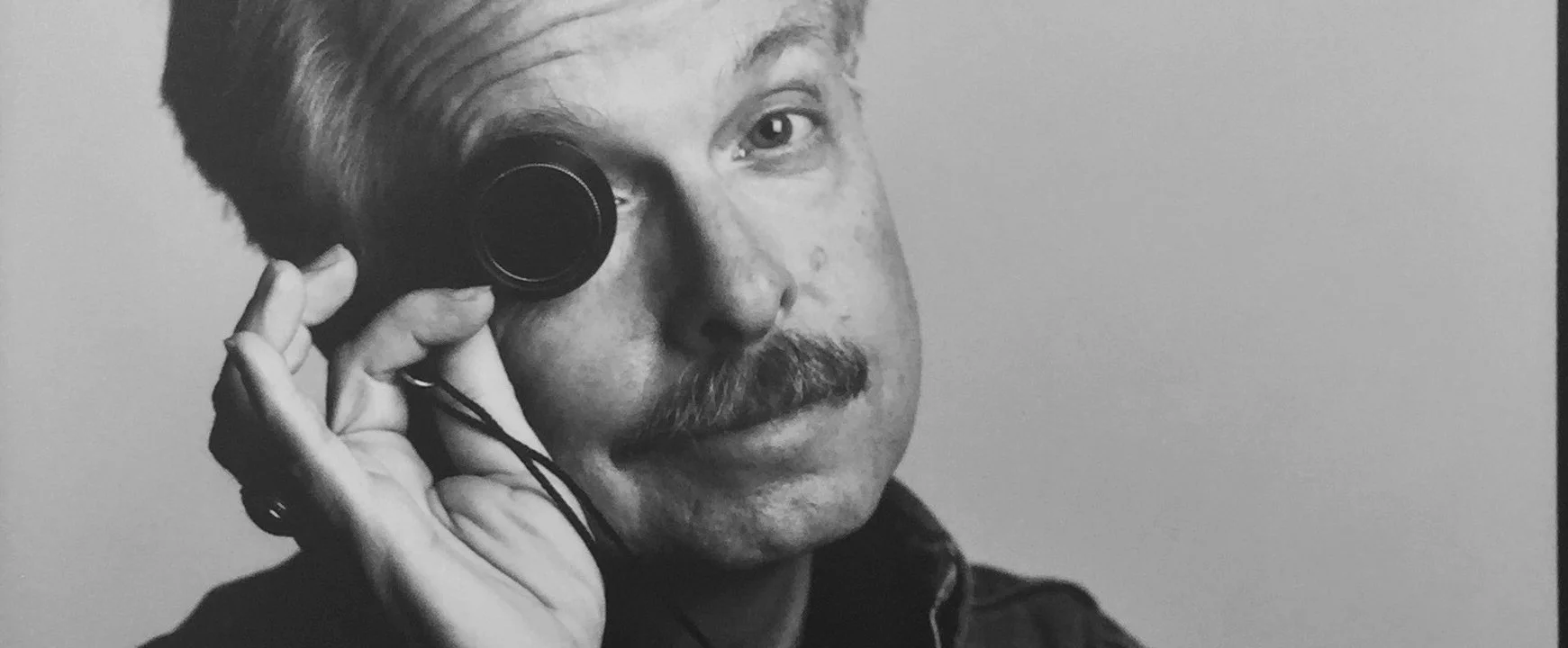Thomas Edward Ackerman ASC (nato il 14 settembre 1948) è un cinematographer americano. Insegna alla School of Filmmaking dell'UNCSA dal 2009. Ha collaborato con il documentarista pluripremiato con l’Oscar Charles Guggenheim (1970-1973). Tra i suoi film, da ricordare: Frankenweenie (1984), Beetlejuice (1988), Christmas Vacation (1989), Jumanji (1996), Rat Race (2001), Anchorman: The Legend of Ron Burgundy (2004), Alvin and the Chipmunks (2007).
Più mi avvicino all'iperuranio e più penso a te. Intervista a Fabio Zamarion sulla collaborazione con Giuseppe Tornatore
Fabio Zamarion (Roma, 1961) è un direttore della fotografia italiano. Diplomatosi al Centro Sperimentale di Cinematografia nel 1985 sotto la guida di Carlo Di Palma e Beppe Lanci, affianca a lungo Vittorio Storaro e Mauro Marchetti come assistente operatore e operatore di macchina, girando fra gli altri anche Piccolo Buddha di Bertolucci. Dopo alcune esperienze televisive come direttore della fotografia, esordisce sul grande schermo nel 2000 con Occidente di Corso Salani e nel 2003 riceve la sua prima candidatura al David di Donatello con Respiro. Nel 2006 il thriller La sconosciuta scandisce l'inizio della collaborazione di Zamarion con Giuseppe Tornatore, e gli frutta la vittoria al David e una candidatura agli European Film Award; la collaborazione fra i due viene continua L'ultimo Gattopardo - Ritratto di Goffredo Lombardo (2010), La migliore offerta (2013), con Geoffrey Rush, e La corrispondenza (2016), con Jeremy Irons e Olga Kurylenko. Altri film di cui Zamarion ha firmato la fotografia sono stati La signorina Effe di Wilma Labate, Evilenko e La macchinazione di David Grieco, Un giorno perfetto di Ferzan Özpetek, Questione di cuore di Francesca Archibugi e Tolo Tolo di Checco Zalone.
La carriera di un cinematographer. Conversazione con Hiro Narita
Hiro Narita è un cinematographer, membro della American Society of Cinematographers (ASC) e dell'Academy of Motion Pictures and Sciences. Nasce il 26 giugno 1941 a Seoul (Corea del Sud) da genitori giapponesi. Nel 1945 lui e la sua famiglia si trasferirono a Nara, in Giappone, e successivamente a Tokyo. Dopo la morte prematura di suo padre e il nuovo matrimonio di sua madre con un giapponese americano, emigra a Honolulu, Hawaii, nel 1957, dove si diploma alla Kaimuki High School. Frequenta il San Francisco Art Institute dove riceve un BFA in Graphic Design nel 1964. Ottiene rapidamente una buona posizione presso un'importante azienda di design locale, ma dopo appena sei mesi viene arruolato nell'esercito degli Stati Uniti. Per due anni lavora come designer e fotografo al Pentagono. Quando si congeda dall'esercito degli Stati Uniti, John Korty, regista di The Autobiography of Miss Jane Pittman e del documentario Who Are the DeBolts? And Where Did They Get Nineteen Kids? (Premio Oscar per il miglior documentario) lo prende sotto la sua ala protettrice. Con Korty, per più di tre anni, collabora come assistente cameraman, gaffer, proiezionista, disegnatore di poster cinematografici, e altro. Dopo l’esperienza come operatore di ripresa aggiuntivo in Zabriskie Point (1970) di Antonioni, John Korty gli regala il primo film della sua carriera, un film tv intitolato Farewell to Manzanar (1976), per il quale riceve una nomination agli Emmy Award. Narita ha quindi lavorato in diverse mansioni in film come: The Last Waltz, More American Graffiti, Never Cry Wolf (per questo film vince il Boston Society of Film Critics Award e il National Society of Film Critics Award), Return of the Jedi, Indiana Jones and the Temple di Doom, Always, Honey, I Shrunk the Kids, Star Trek VI: The Undiscovered Country, Dirty Pictures, The Rocketeer, Hocus Pocus, The Time Machine, The Arrival.
A Cinematographer Career: Conversation with Hiro Narita, ASC
Hiro Narita is a cinematographer, member of the American Society of Cinematographers (ASC) and Academy of Motion Pictures and Sciences. He was born on June 26 1941, in Seoul (South Korea) to Japanese parents. In 1945, he and his family moved to Nara, Japan, and later to Tokyo. Following his father's early death and his mother's remarriage to a Japanese American, the family emigrated in 1957 to Honolulu, Hawaii, where he graduated from Kaimuki High School. He went on to the San Francisco Art Institute where he received a BFA in Graphic Design in 1964. He soon landed a good position at a prominent local design firm, but the job lasted barely six months before he was drafted into the U.S. Army. For two years, he served as a designer and photographer at the Pentagon. When he was discharged from the U.S. Army, John Korty, director of The Autobiography of Miss Jane Pittman and the documentary Who Are the De Bolts? And Where Did They Get Nineteen Kids? (Academy Award for Best Documentary Feature) took him under his wing. With Korty, for more than three years, he collaborated as an assistant cameraman, gaffer, projectionist, film-poster designer, etc. After his experience as additional camera operator on Antonioni's Zabriskie Point (1970), John Korty gave him his first substantial film, a TV movie called Farewell to Manzanar (1976) for which he received an Emmy Award nomination. Then Narita worked in movies: The Last Waltz, More American Graffiti, Never Cry Wolf (for this movie he won the Boston Society of Film Critics Award and the National Society of Film Critics Award), Return of the Jedi, Indiana Jones and the Temple of Doom, Always, Honey, I Shrunk the Kids, Star Trek VI: The Undiscovered Country, Dirty Pictures, The Rocketeer, Hocus Pocus, The Time Machine, The Arrival.





